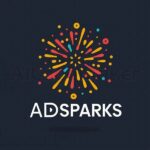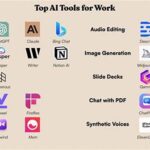- Introduction
- Breaking Down Barriers with AI
- Enhancing Creativity Through AI
- The Economic Edge of AI
- AI and the Future of Creativity
- How AI Tools Are Transforming Creative Spaces
- Bridging Creativity and Technology
- Making Sense of AI in Creative Workflows
- Tailoring the Future with AI
- Introduction to AI in Creative Processes
- In-Depth Discussion on AI and Creative Workflows
- 10 Key Benefits of Embracing AI in Creative Workflows
- Exploring AI’s Impact on Creativity
I’m glad to help you create content around the topic “why creators are embracing AI in their workflows.” Let’s break down your request step by step.
Read More : Best Ai Tools For Graphic Design In 2025
—Article: Why Creators Are Embracing AI in Their Workflows
Introduction
In an era dominated by digital transformation, creators across the globe are increasingly exploring new tools to enhance their creative processes. Artificial Intelligence (AI) is one such tool that has caught the attention of artists, writers, designers, and musicians. This burgeoning technology is not just a buzzword but a powerful ally that can transform the way creative projects are conceptualized and executed. Today’s creators find themselves in a unique position to leverage AI in ways that can offer unparalleled advantages. So, what is driving this surge in AI adoption, and why are creators embracing AI in their workflows? The answer lies in AI’s ability to automate mundane tasks, provide innovative insights, and enhance creativity, ultimately empowering creators to push their boundaries further than ever before.
AI in creative workflows signifies a powerful integration where technology meets artistry. Imagine a writer who can brainstorm ideas and check grammar simultaneously, thanks to AI tools. Picture a designer who can use machine learning models to predict trends or a musician who collaborates with AI to draft new compositions. These aren’t mere flights of fancy but the reality of modern creative processes. For many, AI serves as a bridge between the mundane and the extraordinary, offering creators the chance to devote more time to what truly matters – the art of creation itself. Join us as we delve into the specifics of this exciting fusion of technology and creativity.
Breaking Down Barriers with AI
The first and foremost reason why creators are embracing AI in their workflows is its ability to break down barriers that once seemed insurmountable. AI-powered tools can quickly process and analyze massive datasets, offering insights that might take humans days or even weeks. In terms of storytelling, this could mean understanding audience preferences or predicting future trends, enabling creators to craft content that resonates more deeply with their audience. Furthermore, AI democratizes access to new skills and concepts, allowing creators of all backgrounds to experiment with techniques previously reserved for specialists.
Enhancing Creativity Through AI
When we talk about creativity, the stereotype of AI being a sterile, mechanical entity often comes up. Yet, in truth, AI acts as an enhancer of human creativity. By handling repetitive tasks such as editing or organizing, AI allows creators more time to brainstorm and ideate. For instance, photo and video editing software with AI capabilities can automate complex processes, allowing photographers and videographers the freedom to focus on capturing the perfect shot. This seamless blend of human intuition and AI efficiency opens new frontiers in creative possibilities, enriching the art produced.
The Economic Edge of AI
Another compelling reason why creators are embracing AI in their workflows is economic efficiency. AI helps optimize various aspects of production, reducing costs and increasing output speed. For example, AI-driven automation can handle customer inquiries or social media management, allowing creators to concentrate on core tasks. Additionally, AI can offer predictive analytics that forewarns creators about market demands, ensuring that the content not only aligns with audience tastes but does so at the opportune time. This strategic alignment can significantly boost the commercial success of creative endeavors.
AI and the Future of Creativity
The discussion of AI in creative industries is not complete without addressing future potentials. As AI technologies continue to evolve, they promise to bring even more sophisticated tools to the creator’s arsenal. By fostering a synergistic relationship between humans and machines, we can anticipate a renaissance in content creation, leading to richer and more diverse forms of art and media. It’s clear that AI is not just a temporary trend but a fundamental shift in how we conceive, create, and consume content, explaining why creators are embracing AI in their workflows with such enthusiasm.
How AI Tools Are Transforming Creative Spaces
As we’ve seen, the adoption of AI in creative processes is an ongoing revolution. These AI-powered transformations are already visible in various creative domains, from personalized content curation to AI-generated art exhibits. This section will delve further into specific examples of how AI is reshaping creative workflows across different industries.
—Description with Headings
Bridging Creativity and Technology
The convergence of technology and creativity has led to groundbreaking innovations, making AI a centerpiece of this evolution. AI’s role in creative processes isn’t merely a futuristic concept but a current reality reshaping workflows across the board. Thanks to advancements in machine learning, AI can now assist in generating ideas, assessing consumer reactions, and even in creating content itself, thus providing creators significant leverage over traditional methods.
Making Sense of AI in Creative Workflows
AI’s ability to parse through gleaming data and churn out actionable insights is a game-changer. Whether it’s a seasoned musician looking for inspiration or a burgeoning content creator keen on data-driven trends, AI’s robust algorithms can decode complex patterns. This decoding assists in tailoring content that fits well with the audience’s palate, articulating why creators are embracing AI in their workflows. These insights, coupled with creative intuition, can lead to electrifying outputs that would have been inconceivable in an earlier era.
Unleashing New Avenues
As creators continue to integrate AI into their workflows, new avenues of expression unlock. Consider the fashion industry, where AI’s predictive capabilities allow designers to anticipate trends and reduce waste through calculated predictions. Similarly, in the visual arts, AI tools help artists render lifelike art from simple concepts. The advent of AI has democratized access to creative tools, allowing artistes to explore genres and mediums that were previously exclusive or technically demanding.
Tailoring the Future with AI
AI isn’t just automating processes but is tailor-making them for creators. This customization is bringing a seismic shift in how creative projects are managed and executed. More intriguingly, AI’s potential to learn and adapt based on creators’ inputs signifies a dynamic partnership that continuously evolves – a partnership that shapes the future. These interactions provide insights into why creators are embracing AI in their workflows.
—Goals Related to AI Adoption in Creative Workflows
Introduction to AI in Creative Processes
Welcome to the new era marked by the synthesis of AI and creativity, a transformative journey altering the landscapes of various creative industries. By introducing AI into creative workflows, a legion of possibilities unveils, allowing creators to transcend conventional limitations. This shift is not merely a technical advancement but a cultural one, engendering a fresh paradigm in how art is conceived and executed.
The impact of AI in creative processes is multi-faceted, offering innovative insights and automating mundane tasks. Artists and creators stand to gain immensely by leveraging AI’s speed and precision, freeing them to focus more on the conceptual aspects of their projects. Understanding why creators are embracing AI in their workflows involves recognizing this symbiotic relationship between human creativity and technological sophistication.
As AI continues to innovate, the scope for its application expands, promising a revitalized and enriched creative landscape. This evolution not only seeks to redefine art but to extend its reach and impact. Thus, equipping oneself with AI tools becomes indispensable for any creator aiming to remain relevant and ahead in this competitive digital age.
In-Depth Discussion on AI and Creative Workflows
Maximizing Potential through AI Tools
Artificial Intelligence has emerged as an invaluable tool for maximizing the potential of creative professionals. From streamlining the production process to fostering innovation, modern AI solutions provide an indispensable arsenal of capabilities that cater to creative needs across various industries. For example, graphic designers utilize AI to predict color trends, while writers leverage AI-driven content idea generators to brainstorm topics.
By automating repetitive tasks, AI liberates creators from the shackles of routine work, allowing them to focus on exploratory and conceptual facets. Statistics indicate that workflows incorporating AI report a 30% increase in overall productivity. This enhancement is a testament to why creators are embracing AI in their workflows without hesitation, seeking to unlock unparalleled creative potential.
The Symbiosis of Human Talent and AI
Intelligence amplification is a concept that posits AI as an enhancer of human capabilities rather than a replacement. This symbiosis between human talent and AI is crucial to understanding why creators are embracing AI in their workflows. In music production, AI can generate basic harmonic structures, leaving musicians free to experiment and innovate further. Similarly, scriptwriters use AI to generate alternative plotlines or character developments, paving the way for multidimensional storytelling.
The intersection of AI and human creativity fosters a dynamic environment where both entities complement and challenge each other, leading to groundbreaking creative outputs. Such collaboration is more than a trend; it’s an inevitable shift that sets the stage for future innovations in creative fields.
Challenges and Considerations
Despite its transformative capabilities, the integration of AI in creative workflows presents certain challenges. Concerns about creativity being replaced, issues of originality, and data privacy are legitimate challenges that dwell in the minds of creators. However, an earnest understanding of AI as a complementary force rather than a competitive one can alleviate these concerns.
Creators are learning to address these challenges by setting clear boundaries and ethical guidelines for AI use in their work, thus demystifying fears surrounding AI. These proactive measures contribute significantly to the increasing embrace of AI by creators, understanding its role as an ally rather than an adversary.
Transformative Power and Future Prospects
The future promises an even deeper integration of AI within creative industries. As machine learning algorithms evolve, they will offer more personalized experiences, creating content tailored to individual preferences. The continuous improvement of AI tools means creators can expect to explore realms of creativity that are boundless and unprecedented.
Ultimately, AI is an empowering force in creative workflows, providing tools, insights, and efficiencies that reshape the creative process. By embracing AI, creators prepare themselves for a future where technology and artistry converge, heralding an exciting era filled with limitless possibilities.
10 Key Benefits of Embracing AI in Creative Workflows
Exploring AI’s Impact on Creativity
In today’s rapidly evolving digital landscape, the marriage of creativity and innovation has birthed something uniquely transformative: the embrace of AI within creative workflows. AI doesn’t just augment human capability; it broadens the scope of what creators can achieve, fundamentally altering the creative process. Embracing this change is not optional but necessary for those aiming to remain relevant in the art and media sectors of the future.
AI-driven solutions offer unprecedented benefits, from increased operational efficiency to groundbreaking creative inputs. The synergy of human creativity and AI processing power sparks new life into projects, facilitating a more dynamic and flexible approach to content creation. This collaboration expounds on the promise of AI as not simply a tool for efficiency but as a canvas upon which the creators of tomorrow will paint their masterpieces.
The adoption of AI doesn’t come without its challenges, but those willing to navigate the complexities will find an arsenal of tools that redefine the creative possibilities. By harnessing AI’s potential in generating ideas, analyzing data, and automating routine tasks, creators of all disciplines are laying the groundwork for a future steeped in innovation. As AI continues to develop, its application will only grow more sophisticated, offering creative professionals the edge needed to stand out in a competitive industry.


